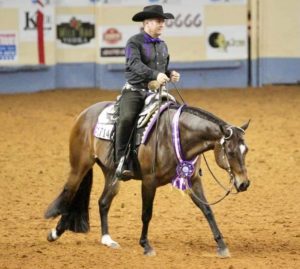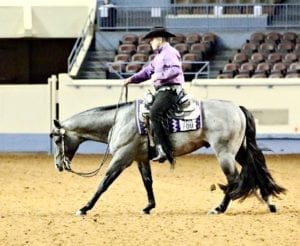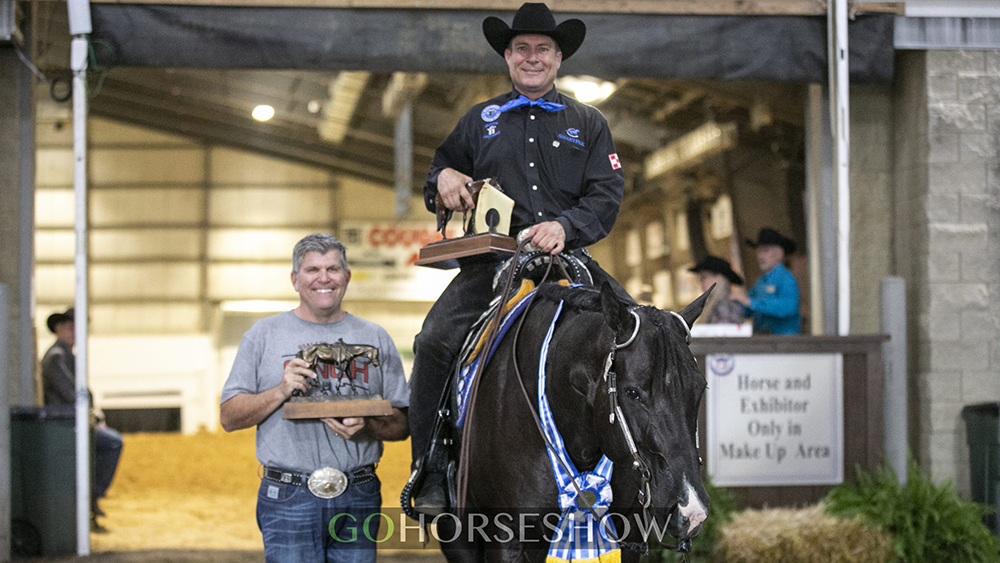We spoke with Charlie Cole and Jason Martin of Highpoint Performance Horses, to get their tips to achieve the perfect lead change in Western Riding.
Cole & Martin have dominated the western riding arena for years and are unparalleled in their success. While they have commanded the winner’s circle, these top trainers are always willing to help and explain their process and routine to get the top of the class.
Timing and Placement
The perfect lead change combines the horse’s position, timing, and pace through the change, and practice makes perfect. Cole stated, “We practice the line a lot and work on control and timing going down the line.” Charlie suggested that counting strides can be helpful, “I start counting on the line when the horse’s head or shoulder is even with the cone. Then, depending on the size of the line, I usually change on the 3rd or 4th stride.”
 Martin suggests maintaining the same, even rhythm throughout the entire pattern, “I try to make everything as straight as possible, both with the lines I choose for the pattern and the body of my horse.”
Martin suggests maintaining the same, even rhythm throughout the entire pattern, “I try to make everything as straight as possible, both with the lines I choose for the pattern and the body of my horse.”
In agreement with Cole, Martin counts three strides before the line change. “I ask my horse to increase his stride length for the two strides before the change and have the change stride be the longest. I then take a breath and let him come back to neutral before I do the same thing again on the next change. In my head, I think right leg, right leg, right leg, then left leg… take a breath, then left leg, left leg, left leg, change. So, I’m asking for a slight move over and move-up on each stride before the change,” explained Martin.
Preventing Anticipation
The Western Riding class is heavily dependent on the lead change and every association has a limited set of patterns. Practice can lead horses to start anticipating when the lead change will happen. However, Martin believes the proper way of teaching a horse to change leads prevents this problem. Martin encourages teaching a horse to change leads off a push rather than a release to help avoid the start of any issues.
 Jason went on to explain, “We are always working on making the horses stay right in the center of the reins during the entire pattern. If you’re holding your hand six inches to the outside to keep your horse from cutting the corner, that means they are cheating you.”
Jason went on to explain, “We are always working on making the horses stay right in the center of the reins during the entire pattern. If you’re holding your hand six inches to the outside to keep your horse from cutting the corner, that means they are cheating you.”
To determine if your horse is anticipating, Martin suggests, “Go straight across the arena for a crossover. During and after the crossover, keep your hand right over the withers and don’t move it and see where your horse goes. Most horses will immediately start drifting in the direction of the new lead they are on.”
To fix this anticipation, he suggested, “Keep the horse straight all the way across the arena, then go the opposite direction in a counter canter. Do this over and over until they stay straight. Every time they want to go left, you go right. If the horse starts to lean right, you go left. Your goal is to do a crossover and change leads with your hand in the middle of his neck, and the horse continues straight all of the ways to the fence and will stop with his nose at the wall because he was waiting for you to tell him what direction to go.”
Additionally, Charlie added suggestions to help prevent anticipation down the line. “I practice the line a lot,” he said. “I do exercises where I change the first and last change or just the first two, etc., varying the order of changes. Then, I work on my horse, being patient and waiting for me to ask to change.”
Maintaining Consistency
One of the most common lead change challenges is maintaining a consistent pace. The goal is to maintain a consistent pace before, during, and after each lead change for a better, prettier change.

To achieve this consistency, Cole suggests keeping an even pace. “Usually, my horses do soften after each change, but it’s more what I feel than what the spectator or judge sees,” Charlie said.
Martin suggests staying on a rhythm. “Slightly move up to and through the change, then relax and come back to neutral and start the process over for each change,” he stated.
Cole explained he wants his horses to be relaxed and confident on a final note. “I rarely school my horse where the changes occur,” Charlie shared. “If they make a mistake, I take them off the pattern and make the adjustment and then go back to the pattern when they are ready.” Martin added, “Keep a good pace, stay straight, look ahead to keep everything smooth.”
Achieving the perfect lead change isn’t an out-of-reach goal with practice. The change should have a forward pace with lift through the change, and the horse’s body should stay straight as it lays down a flat front leg that finishes with a pointed toe. A level topline with the nose slightly out, a quiet mouth and tail, and ears forward complete the package.
To learn more from Charlie and Jason about perfecting lead changes and showing in western riding, CLICK HERE to check out their video series, for rent or purchase via digital download starting at just $9.99.








